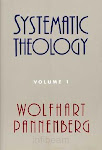1 week ago
Friday, 27 June 2008
After Virtue - part 6 (of 6)
1. Where Are We Now, and Why?
2. “Enlightened” Europe
3. Turning point: Nietzsche or Aristotle?
4. Pagan vs. Christian Virtues
5. After Virtue
6. MacIntyre’s Answer
6. MacIntyre’s Answer
The finale looms near. In the last chapter title the author asks: “After Virtue: Nietzsche or Aristotle, Trotsky, and St Benedict?”
All secular accounts of morality have failed. Nietzsche’s negative proposal of debunking morality altogether is, MacIntyre admits, plausible. But only if moral tradition cannot be vindicated. If Nietzsche wins, he wins by default (others lose). His apparent honesty is his most attractive quality.
However (I am drastically simplifying here), Nietzsche is debunked. His “great man”, too, is exposed as a pseudo-concept. MacIntyre concludes that for 300 years there has been no coherent account of liberal individualism. But Aristotelianism can be restated.
One final possible objection, the salvific claims of Marxism, is rejected. Marxisim, upon closer examination, turns out to be Kantian and utilitarian, which both had been rejected earlier. Also, Marxism in power is Weberian, which was rejected as well. To sum up, MacIntyre lets Trotsky speak: “The Soviet Union is not socialist … the so-called illumination led to darkness.”
In this final chapter just before the Postscript, MacIntyre draws a now famous parallel. He claims that the Western world (Europe and North America) is the Roman Empire – just before, or during, or right after (it is hard to tell), it fell.
After the fall of Rome, St Benedict launched a program that enabled the cultivation of virtues to move from the imperial (now in rabbles) to the community (namely, monastic community).
We have reached a similar turning point. If intellectual and moral life are to be sustained during our “dark ages”, MacIntyre states, we need another “St Benedict” to guide us through.
At the beginning of this series I mentioned that my Master’s thesis ended with a reference to After Virtue. Pope John Paul II’s theological anthropology had been my work’s focus. He, like MacIntyre, felt that modernity was in crisis. At the root of the crisis, the pope believed, was a false anthropology, a false humanism. In order to counter it, he attempted to restore a holistic view of man (virtues and teleology, but also the “image of God” in man, included).
Many are attracted to the “theological painting” the pope designed. In fact, the professor of theology and John Paul II’s biographer George Weigel draws attention to MacIntyre’s last point in After Virtue. “Another – surely a very different kind of – St Benedict is needed,” MacIntyre had concluded.
Weigel himself along with many others (for example, the Polish philosopher-priest Jarosław Kupczak) have speculated on whether John Paul II, or his legacy, will meet the criteria. Time will tell.
Subscribe to:
Post Comments (Atom)







No comments:
Post a Comment